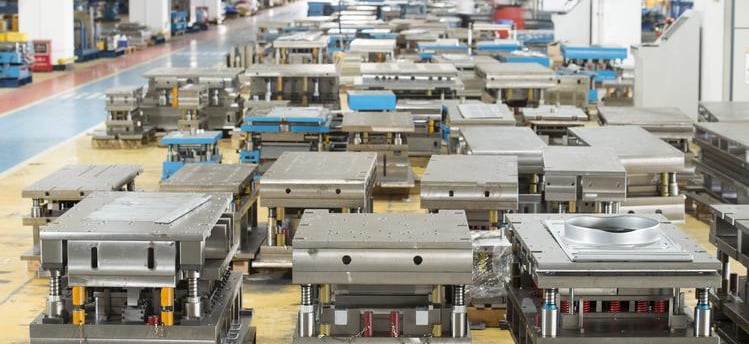Common Mistakes in Mold Design and How to Avoid Them
3/2/2025


Understanding Mold Design Basics
Mold design is a critical aspect of the manufacturing process, particularly in industries such as plastics, metal, and rubber. A mold serves as a vessel into which raw materials are poured or injected to create a desired product shape. There are various types of molds, including injection molds, blow molds, and compression molds, each tailored for specific applications. Understanding the basic principles of each type is essential for any successful production endeavor.
Key terminology is fundamental when discussing mold design. Terms such as "draft angle," "core," "cavity," and "gate" are part of the mold design lexicon. The draft angle is the slight taper applied to the sides of a mold, facilitating easy removal of the final product. The core and cavity are the two primary components of a mold, where the core shapes the interior and the cavity shapes the exterior of the product. Additionally, gates are the points where material enters the mold, influencing flow and filling during the manufacturing process.
Essential design considerations must be taken into account to ensure precision in mold creation. Factors such as material selection, mold geometry, and cooling systems significantly impact the quality of the final product. For instance, improper cooling can lead to warping and defects, while poor geometry may affect the mold's ability to fill correctly. Moreover, a poorly designed mold can result in increased cycle times and material waste, further compounding inefficiencies in manufacturing.
Overall, understanding mold design basics is crucial for achieving high-quality results in production. A well-designed mold not only improves product quality but also enhances operational efficiency. Consequently, it is vital for manufacturers to be aware of the principles of mold design and avoid common pitfalls that could jeopardize their production outcomes.
Identification of Common Mistakes
Mold design plays a crucial role in the success and efficiency of manufacturing processes. However, several common mistakes can significantly impact the functionality and the overall costs associated with mold production. One prevalent error is inadequate cooling channel placement. Cooling systems are essential for maintaining consistent temperatures during the manufacturing process, and poorly designed cooling channels can lead to uneven cooling. This results in warping or dimensional inconsistencies in the final product.
Another common mistake involves incorrect draft angles. Draft angles are necessary for the mold to release the finished part smoothly. If the draft angle is insufficient, parts can become stuck, increasing the risk of damage during the removal process. This not only prolongs production but may also require additional rework or even lead to mold damage, which further escalates costs.
Insufficient venting is yet another critical oversight in mold design. Venting allows air to escape from the mold cavity during the injection process, ensuring that the material fills the space adequately. Poorly designed vents can trap air, causing air bubbles or incomplete fills, which ultimately compromises the integrity of the product. The resultant defects can necessitate extensive rework and delays in production schedules. Furthermore, improper material selection is a mistake that can have long-lasting repercussions. Selecting materials that are incompatible with design requirements can lead to structural failures or performance issues in the final product.
By understanding these common mistakes in mold design, manufacturers can take preventative measures during the design process. This proactive approach not only enhances the overall efficiency of production but also minimizes the likelihood of defects, production delays, and increased costs, thereby improving the bottom line.
Best Practices for Effective Mold Design
Effective mold design is critical to the successful production of high-quality components. To optimize design efficiency, it is essential to utilize advanced simulation software. These tools allow designers to simulate the injection molding process, enabling them to predict potential issues such as flow patterns, thermal management, and potential defects. By visualizing these factors, designers can refine their mold designs to enhance both performance and manufacturability, ultimately reducing waste and costs associated with trial-and-error approaches.
Collaboration with experienced mold makers is another key best practice. Engaging professionals who possess extensive knowledge of materials, manufacturing processes, and industry standards can lead to design improvements that may not be immediately apparent. Their insights can help identify potential challenges early in the design phase, allowing for solutions to be implemented proactively. This collaboration not only enhances the quality of the mold but also streamlines the production workflow, resulting in a more efficient process and higher quality outcomes.
Adhering to established industry standards during the mold design process is vital for ensuring safety, reliability, and compatibility with production machinery. Designers must stay informed about the latest regulations and best practices to ensure compliance and enhance the overall quality of the mold. Additionally, thorough testing and validation must be conducted to guarantee that designs meet both functional and aesthetic requirements before moving into full-scale production. This step is crucial in identifying any issues that may arise during actual mold operations, thereby paving the way for necessary adjustments and reducing potential setbacks.
In conclusion, by integrating simulation software, collaborating with skilled professionals, and adhering to industry standards while conducting thorough testing, designers can significantly enhance the effectiveness of their mold designs. These best practices not only improve design efficiency but also contribute to the overall success of the production process.
Case Studies: Mistakes and Solutions
In the realm of mold design, even the smallest oversight can lead to significant challenges in manufacturing processes. Examining real-world case studies provides invaluable insights into common pitfalls and the effective solutions deployed to rectify these issues. One notable case involved a company that faced recurring defects in their injection molded parts, primarily attributed to inadequate venting. The lack of proper vents led to trapped air and gas, resulting in surface blemishes and structural weaknesses in the final product. To resolve this, engineers conducted an extensive analysis of the mold design and implemented additional vents in critical areas. This adjustment not only eliminated the defects but also improved the overall efficiency of the production cycle.
Another example highlights the consequences of selecting inappropriate materials for mold construction. A manufacturer used a standard steel alloy that was not suited for the high-temperature requirements of their intended application. As a result, the mold experienced premature wear, leading to decreased part quality and increased downtime. To solve this issue, the team opted for a hardened steel with enhanced thermal resistance. The change significantly extended the life of the mold and improved the quality of the molded components, demonstrating the importance of material selection in mold design.
Additionally, a third case illustrates the impact of inadequate cooling systems within molds. A company discovered that uneven cooling was causing warping in their molded parts. This inconsistency stemmed from poorly designed cooling channels. By redesigning the mold to include optimized flow paths for coolant, the manufacturer achieved uniform cooling, resulting in consistent part dimensions and enhanced overall quality. These case studies underscore the need for meticulous planning, thorough testing, and proactive adjustments in mold design, enabling manufacturers to avert common mistakes and deliver superior products.
